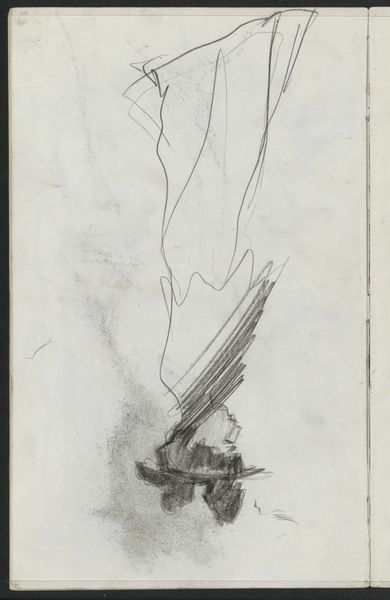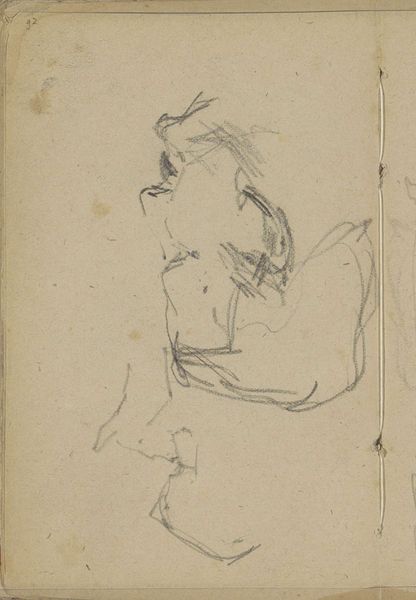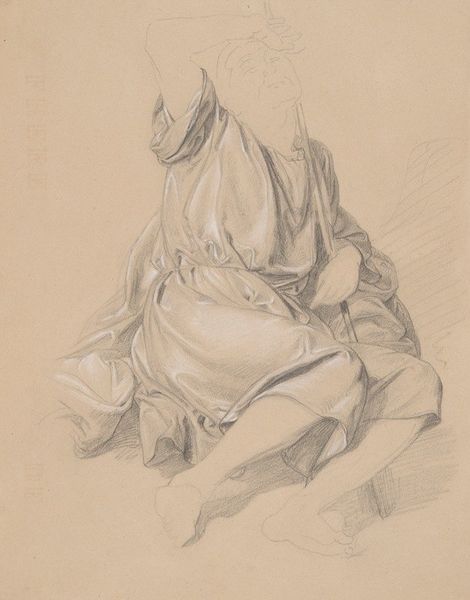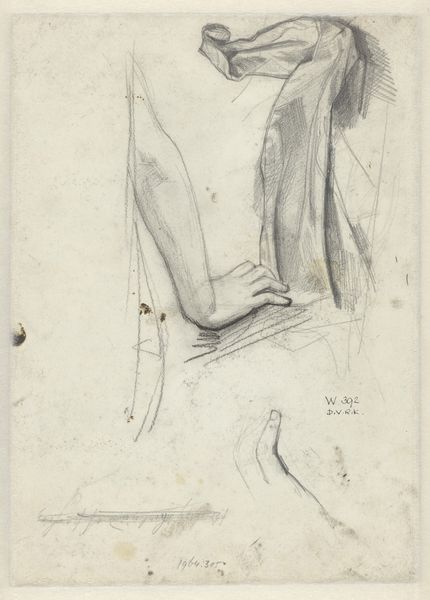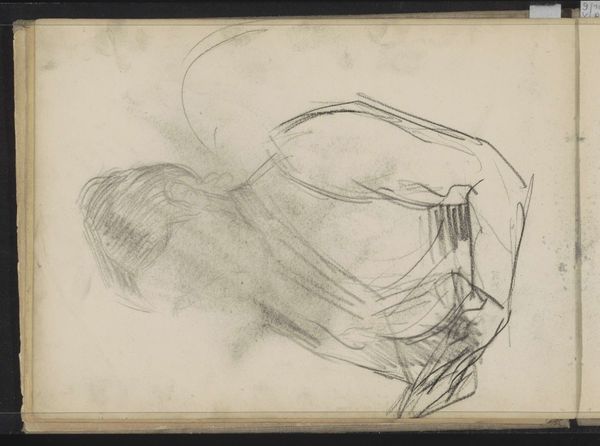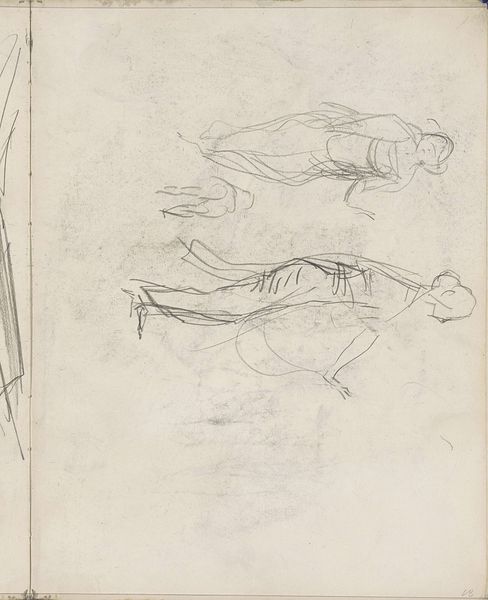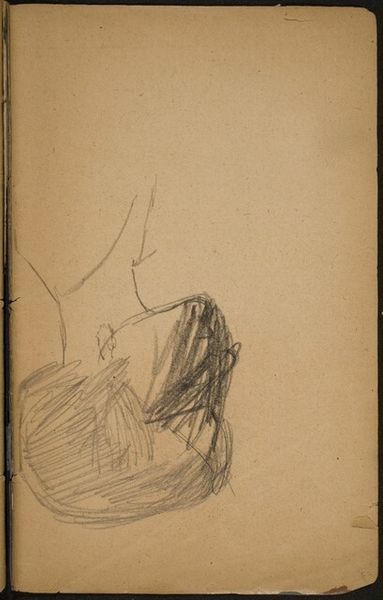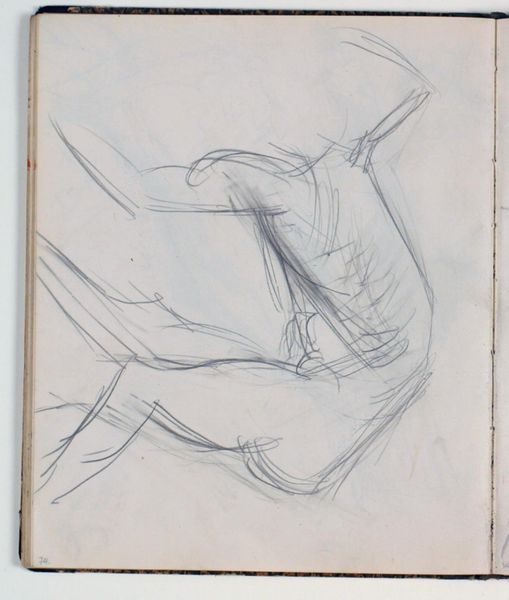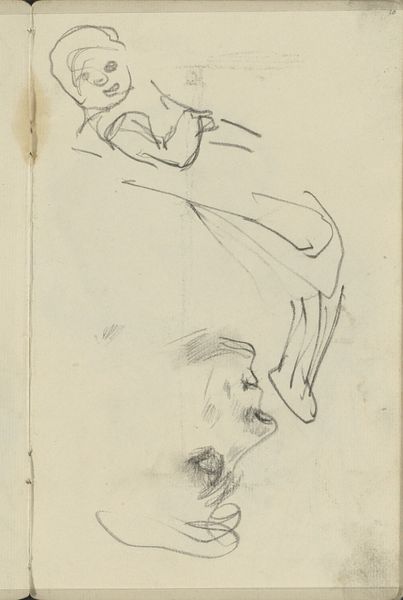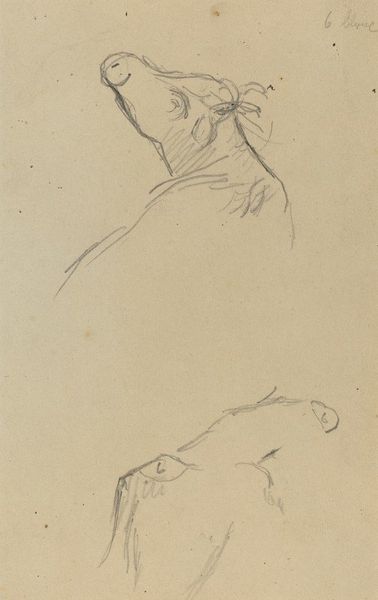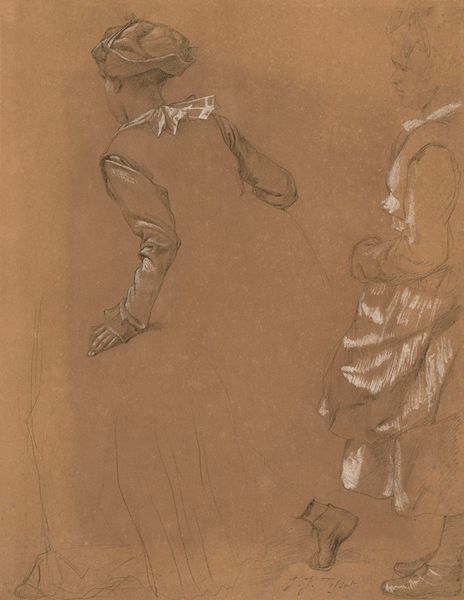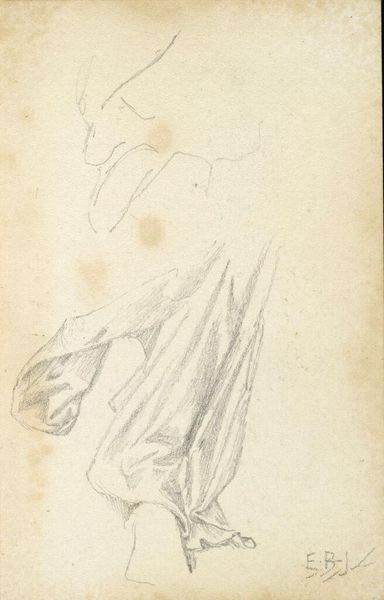
drawing, dry-media, pencil, charcoal
#
portrait
#
drawing
#
charcoal drawing
#
dry-media
#
pencil drawing
#
pencil
#
charcoal
#
academic-art
#
nude
Copyright: Public Domain: Artvee
Editor: Here we have Herbert James Draper’s "Studies of a man’s draped waist, and head," done in pencil and charcoal. There’s a quiet intimacy to this piece; a sense of classical study mixed with something more personal, especially with the loose, unfinished lines. What do you make of this combination? Curator: It’s compelling precisely because of that tension you’ve identified. Draper, working within the late 19th-century academic tradition, was steeped in representing the idealised human form. But looking at the drawing through a contemporary lens, the fragmented nature raises some interesting questions about the male gaze, about power, and objectification. Notice how the draped fabric both reveals and conceals, drawing our eye to certain areas. Do you think this hints at an intentional commentary on the act of looking itself? Editor: I hadn't considered it that way. I saw the drapery more as a way to showcase his technical skill. Now that you mention it, it does feel like a negotiation – a play between exposure and modesty. Curator: Exactly. The ‘nude’ in art history is never just a neutral representation; it’s loaded with cultural meaning. By presenting the figure in this fragmented way, Draper seems to both participate in and perhaps subtly question those established norms. And don't overlook the tilted head, suggesting surrender or perhaps deep contemplation. It infuses the scene with vulnerable subjectivity, countering the dominant gaze. Editor: It's amazing how a seemingly simple sketch can be so complex. Curator: Absolutely. These 'studies' weren't created in a vacuum. They reflect the socio-political climate of the time, engaging in a silent dialogue with evolving attitudes towards the body, gender, and representation. It reminds us to challenge conventional understandings of beauty and the politics inherent within visual representation. Editor: I’ll definitely see the piece differently now. I learned so much! Thanks.
Comments
No comments
Be the first to comment and join the conversation on the ultimate creative platform.
